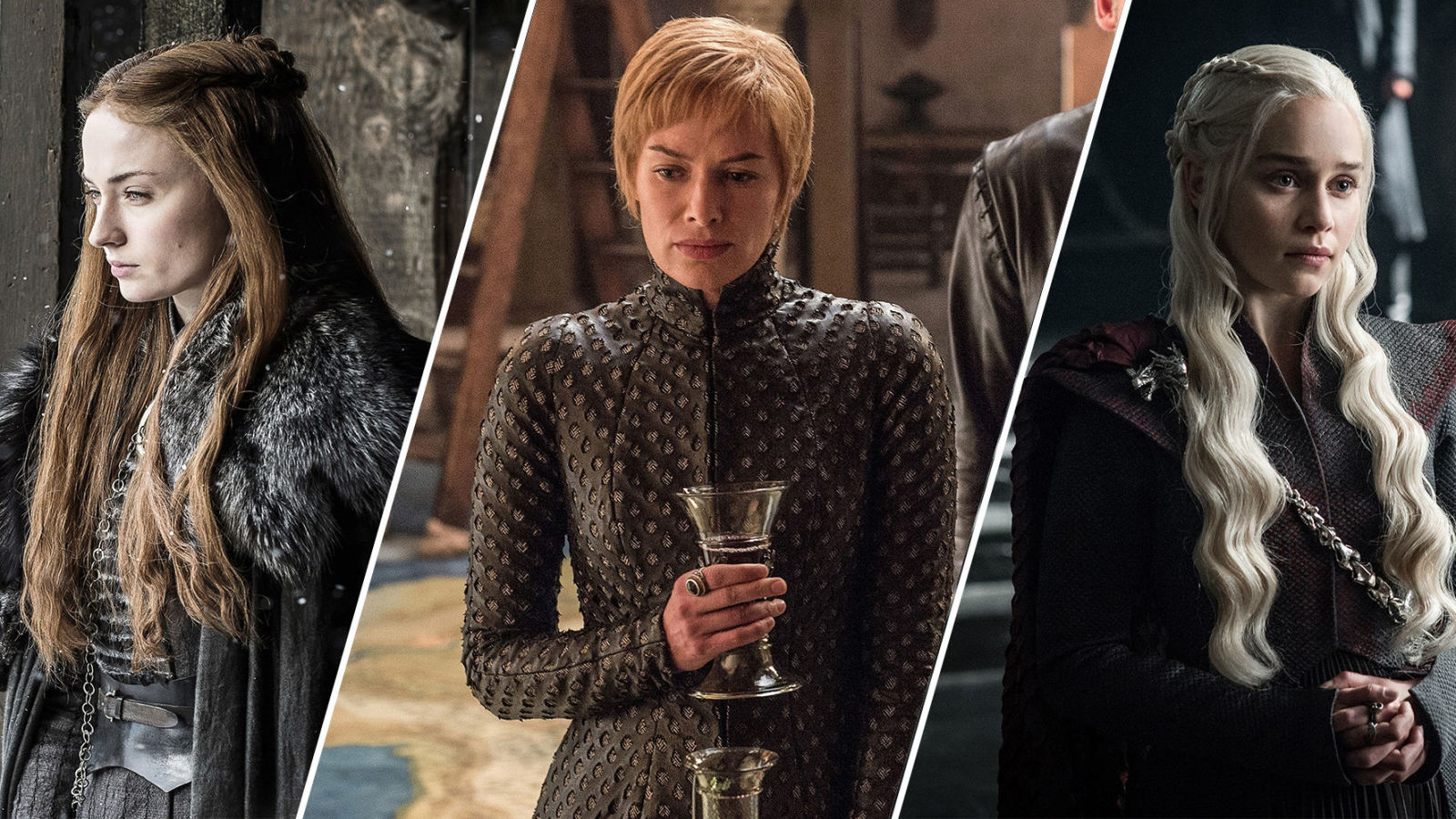
Sansa Stark, Cersei Lannister,
Daenerys Targaryen
“The series Game of Thrones depicts a number of powerful women who exercise remarkable agency in determining their own fates” (Mares, 2017, 147).

From characters such as Cersei Lannister, a victim of circumstances since her birth or Daenerys Targaryen, a girl merely used by her family for political gain, despite the conflict that separates them these women are yet similar in many ways. Cersei, Daenerys or even Sansa are dominating the Game of Thrones universe (Mares, 2017, 147). As we saw previously in article 2 of the first tour, women in Westeros are too often brutalized, victimized and are faced with constant misogyny. Which is why, it is only more glorious to see the tables turn as we follow these women’s characters not only adapting to this predominant man’s world but adapting and eventually taking control of it (Di Placido, 2016, 1, 2). Towards the end of the show, we see these women controlling and leading their destiny through power, politics, manipulations, strength and bloodlines. They are not classical mediaeval women anymore, just born to be wives and mothers, they are taking matters in their own hands despite the cost and the consequences (Mares, 2017, 148). During the Middle Ages, power-driven women would have been condemned for their ambitions. However, despite the complicated path these characters have been through, the show eventually ends with women rising to power. This interestingly mirrors the changes running in our current society. Women are then leading battles and in charge whereas male characters end up killed or left on the side (Di Placido, 2016, 8).
The character of Sansa Stark, shown here in a Funko Pop, represents the triumph of all women in the fictional world of Westeros. In the world of Game of Thrones, as in the real world, women still suffer under the patriarchy (DiGiogia, 2020, 118). Throughout the show we see Sansa transform from a naive girl, yielding to male authority and dominance to a woman who openly challenged the decisions of male leadership. Yet, before she gets to become this powerful woman she goes through trauma as a political prisoner in the hands of the Lannister and in the hands of the Bolton. Trauma gives the female characters a reason to be tough and resourceful (DiGiogia, 2020, 118). Despite that, Sansa evolves into a strong character determined to avenge her family and reclaim her home (Alesi, 2017).
The journey that Sansa’s character undertakes to become the Queen in the North highlights the challenges faced by high-born women in late medieval England and their ability to assert agency within the limitations imposed by society (Alesi, 2017). During the course of the series, she begins to disregard the pastel colours and ends in black and leather reflecting her internal transformation from a passive point to an independent Queen (DiGioia, 2020, 133).